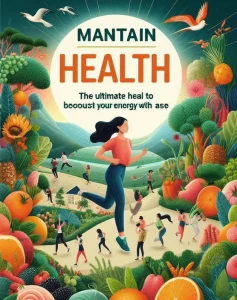Table of Contents
“], “filter”: “nextExceptions”: “img, blockquote, div”, “nextContainsExceptions”: “img, blockquote” }”>
Get full accessibility to Exterior Discover, our on the internet instruction hub that includes in-depth diet, exercise and experience courses, and far more than 2,000 tutorial movies when you
>”,”name”:”in-information-cta”,”sort”:”hyperlink”}}”>sign up for Outdoors+..
Going environmentally friendly is extra well known than ever before, and for very good reason. As ever more much more people glimpse for ways to assistance the world and do away with wasteful behavior, sustainable procedures are getting the norm. But obtaining started off can be a bit overpowering. Which improvements make the most variation – and which need to you skip? How can you operate in direction of sustainability each day?
Sustainability does not demand you to absolutely overhaul your life style. You can make optimistic changes by beginning with easy tweaks to your schedule, then develop from there. By taking a closer search at what you are acquiring, working with and consuming, you can choose for much more eco-pleasant swaps.
Here are 6 methods to hack your present practices and make them far more sustainable.
1. Opt for plants around meat as frequently as possible
You presently know that opting for a plant-centered food plan is the ideal decision for the natural environment. It is also amazingly beneficial for your individual health. But the research retains rising, building it progressively extra important to pick out vegetation above meat as normally as achievable.
Just take a seem at UCLA’s knowledge. Creating the swap from animal-centered foods to plants could increase the global food provide by as significantly as 49 %, without the need of requiring more land or resources. Plant-dependent meals slash our h2o usage, requiring 50 percent less h2o than animal-based mostly meals. And putting vegetation initial also considerably cuts down on greenhouse gas emissions.
On a particular level, reducing the sum of meat you take in is a single of the finest ways to minimize your carbon footprint. Switching to a plant-based mostly diet regime can minimize down on emissions by as substantially as 70 p.c.
Nevertheless, you don’t have to go cold turkey on your latest having routines. You can absolutely go 100 percent plant-based if you want to make the greatest impact. But you can also simplicity into a plant-primarily based way of consuming and nonetheless make your diet plan more sustainable.
You can cut back again on your meat consumption by adopting meatless Mondays, or even by incorporating a number of days of meat-no cost meals into just about every 7 days. Taking in smaller servings of meat or restricting your meat-primarily based foods to 1 for each day are also terrific methods to simplicity into a more plant-centric eating plan. Then, when you’re prepared, you can take your sustainability up a notch by rising the frequency of your plant-primarily based foods.
2. Slash back on cheese
Like meat, animal-primarily based dairy products and solutions are terribly unfriendly to the atmosphere. Analysis demonstrates that dairy goods are essentially the 2nd-most significant resource of greenhouse gas emissions. Dairy cattle even emit the very same greenhouse gases as cattle lifted for consumption.
Cheese is a particularly lousy offender when it arrives to emissions. Mainly because cheese involves a full great deal of milk, it’s one particular of the worst dairy solutions for the surroundings – it in fact makes additional greenhouse gas emissions than some meats.
So, you can conveniently reduce your contribution to these hazardous emissions by cutting back again on the amount of money of cheese you are ingesting. You can reduce cheese from your eating plan totally, but you can also make a variance by utilizing it sparingly. A further choice is to choose dairy-cost-free cheese solutions or vegan cheeses. If you are not completely ready to absolutely do away with cheese, you can also test mixing up your foods by alternating among dairy and non-dairy cheese products and solutions.
3. Ask for paper alternatively of plastic
You’re possible currently bringing your reusable baggage along with you when you go to the grocery shop. This is a person of the least complicated eco-friendly swaps you can make. However, it isn’t often possible – often, these baggage get overlooked at household. And in some cities or locations, retailers may ban customers’ reusable baggage due to overall health fears.
If your reusable luggage are out of the problem, you never have to resort to plastic luggage. Those people bags are section of one-use plastic’s sizeable contribution to greenhouse gasoline emissions. As a substitute, request your retailer if paper bags are out there as an option.
Paper luggage aren’t excellent, due to the fact they are nevertheless a disposable solution that generates much more waste. But they are considerably kinder to the setting than plastic baggage. Paper bags are capable to be reused amongst 1 and a few situations – double the reuse alternatives of plastic – and almost 50 % are recycled when buyers are completed with them. Total, paper bags have reduce emissions than plastic baggage, even after they’ve been thrown away.
So, make guaranteed to question if you can change to paper if you have to decide for a one-use bag. A lot of suppliers will mechanically bag merchandise in plastic, even if paper is obtainable. If you don’t ask, you are going to skip out on a uncomplicated, additional sustainable swap.
4. Decide for specific-sized merchandise rather of purchasing in bulk
Obtaining bulk is usually assumed to be more eco-helpful than acquiring independently packaged products. After all, when you purchase things in bulk, you’re getting a larger amount packaged in just one big container.
Regretably, quite a few bulk objects truly increase the amount of money of packaging you are acquiring. If you’ve ever picked up a huge pack of paper towel or opened a bulk box of macaroni and cheese from a warehouse retail outlet, you have likely identified that every single particular person merchandise within is also wrapped in packaging. That leads to far more cardboard containers and much more plastic wrap than you’d get if you bought each item separately.
In addition, obtaining in bulk can increase the sum of waste you are producing. In accordance to study, those who purchase food in bulk at warehouse outlets toss out drastically extra foods than those people who buy groceries in scaled-down quantities. Bulk customers are likely to get additional in an effort to preserve dollars – and then they wind up throwing absent what they cannot use.
To avert these two distinct varieties of squander and make a far more sustainable practice, test shopping for items in lesser quantities rather of in bulk. Obtain massive portions only if you know you are likely to use the food, or if you know the packaging is streamlined or reusable.
5. Decide on sustainable seafood
Seafood could not right away come to intellect when you feel about sustainable taking in routines. But overfishing is a major trouble nowadays – about 94 per cent of fish shares are overfished or maximally sustainably fished. On top of that, a good deal of seafood is farmed or fished without having any thought of habitat injury, air pollution or working with wild fish as feed.
So, when you’re picking out your seafood, it is crucial to search for out kinds that are sustainable. This indicates you’ll want to order wild or farmed seafood which is harvested in eco-helpful ways, with tiny effect on ocean ecosystems, other wildlife and the environment in standard.
The Monterey Bay Aquarium’s Seafood Observe method delivers a record of the finest – and the worst – kinds of seafood you can take in. Some of the most sustainable versions include arctic char, bass, clams, cod and halibut. Just make guaranteed you’re opting for farmed fish in most scenarios or steering clear of any of the non-sustainable capture solutions, which are possible to be much more extensively obtainable at grocery stores.
6. Use your smartphone to obtain sustainable items
Finding and deciding upon sustainable products is obtaining even less complicated thanks to your smartphone. If you are not confident if the objects you’re buying are essentially sustainable or eco-friendly, you can convert to an app.
Though a lot of foods and goods are labeled as “green” or sustainable, it is challenging to establish what actually lives up to that guarantee. Nonetheless, with smartphone apps like Giki, you can scan a product’s barcode and straight away discover no matter whether or not it is moral, sustainable or healthful. Giki allows you assess the authentic impact of what you are shopping for, making it possible for you to make quick nevertheless knowledgeable decisions whilst you shop.
And Giki is just a person of these kinds of smartphone apps. There is a Seafood Check out app available for download so you can have the Seafood Observe finest and worst record with you as you shop for fish. Some others, like Imagine Dirty, enable you find clean up, eco-pleasant beauty products so you can prolong your inexperienced habits beyond the kitchen area. With your smartphone in hand, you will be capable to store with much more perception into what is actually superior for you and the natural environment.
To learn far more about how you can adopt sustainable behavior, hold looking at:






More Stories
‘Unretiring’? This is how to handle your Medicare coverage
Red cheeks – what can you do?
What Are Retinoids & Will They Work for You? – Apex Dermatology & Skin Surgery Center